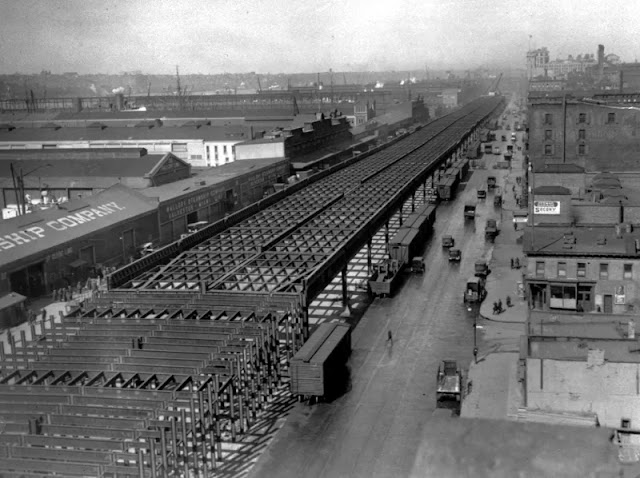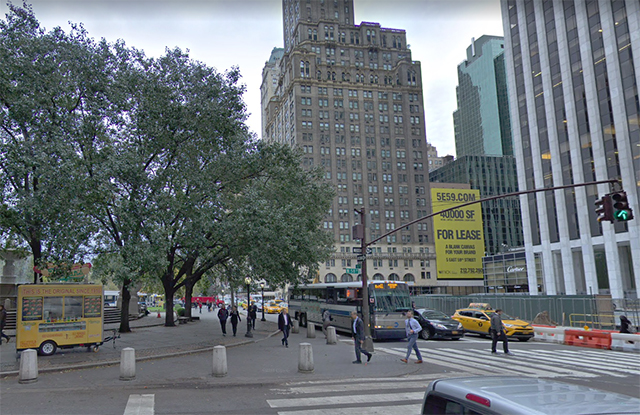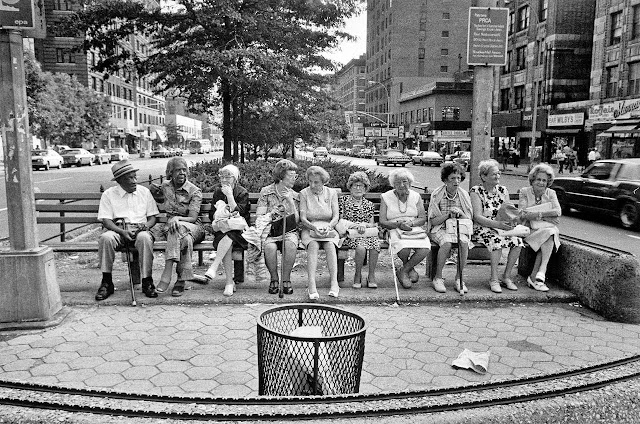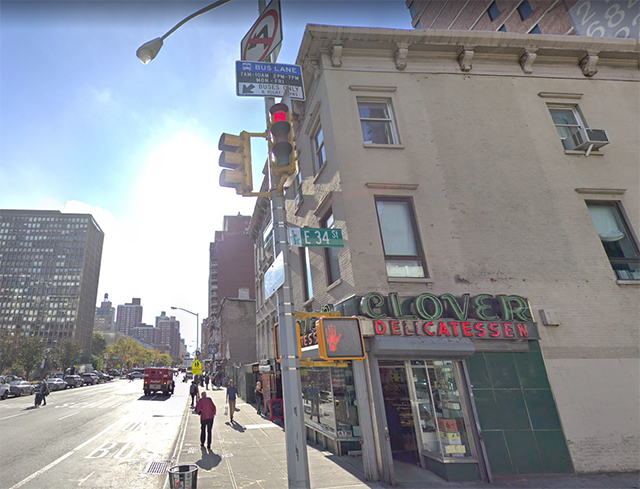Then and Now
 |
| 15th Street at 11th Avenue, New York City, in 1986. |
The above picture of 15th Street at 11th Avenue was taken in 1986. I was curious how the area looks today, so I did a comparison of 15th Street at 11th Avenue in Manhattan from 1986 to 2018. The result using Google Street View is below.
If you are unfamiliar with the general geography of New York City, 11th Avenue is the avenue that runs south along the Hudson River until it turns into West Street around Gansevoort Street in Greenwich Village, just south of the spot in the photographs. Pretty much everyone just calls it the West Side Highway, which was its previous name when Robert Moses completed an elevated highway there following literally decades of construction in 1951. The sad truth of Manhattan is that its leaders never, to this day, have figured out what to do with its waterfronts following the demise of the clipper ships. That problem may never be truly solved.
The West Side Highway (don't ever call it Westway!) itself was a massive catastrophe, lasting barely 20 years in use before lack of maintenance led to its demise in 1973. At the time of the above picture, some portions of the West Side Highway were still waiting to be demolished. However, from here south to the Battery Tunnel, the Westside Highway was long gone by 1986. However, its presence had lasting effects. Rather than being in an area open to sea breezes and the lure of the high seas, lots along the West Side Highway were basically on the "wrong side of the tracks" and had no advantage over areas further inland because they basically were on the outskirts of town.
 |
| The massive West Side Highway under construction in the 1930s (AP). |
Regardless of the causes, back in the 1980s, the area immediately to the left (east) of the highway as we are looking down it in the 1986 photograph was mostly bare, with only scattered structures. The highway itself was kind of a jury-rigged affair, with little coherence and largely surrounded by concrete barriers that looked as of they were an afterthought. It's hard to call a roadway which has open parking lots right next to it a "highway." Why that was the case on some extremely valuable property no doubt stems from the area's previous location of the Westside Highway and before then as a seaport. The Titanic as supposed to dock not far from here in 1912. The parking lots and other wasted space along this stretch of the road did not serve very much purpose, but they did at least provide nice views of New Jersey and make the area unlike virtually any other in downtown Manhattan due to its openness and almost suburban character.
 |
| A finished portion of the West Side Highway being used in 1939, during the funeral procession of King George VI. You can see how the highway ate up a lot of ground (AP). |
Well, you knew that couldn't last! In 1996, New York finally decided to fix things. The new road was an extension of New York Route 9A, which is its official designation at least for funding purposes (I doubt that anyone casually talking about it ever called it "Route 9A," but there's probably someone who did it in, say, 2011 or something). The new highway is a simple six-lane road with street lights and only a small elevated portion. Construction on it was completed in 2002. Since then, the city and state have spent bundles of money turning the city's western shore into running and biking paths. Most of it became parkland where previously it was just asphalt. The park doesn't seem to have much use - people just go there to walk or jog or blade - but now at least you don't have to jump through small openings between concrete barriers to get to the pathway next to the water (which I had to do many times right around the spot where this photo was taken).
The avenue points directly at downtown Manhattan for most of this journey because Manhattan narrows as you head south. The route was straightened during the redevelopment, making it run in a slightly different direction. Thus, in the above photograph from 1986, you can see the World Trade Center looming over the highway. Obviously, that is gone, and its replacement is behind one of those buildings. The reconstruction project also turned that little parking lot where the shack is located on the left into a small park. Nobody ever seems to be there, at least when I walk by, which makes it sort of like Gramercy Park - a nice idea that nobody actually uses. Why would you want to go there, next to passing cars, when a better park along the water is just across the road?
In any event, the below photo shows that someone is making money off of all this redevelopment. Those large new buildings cost a pretty penny and views of New Jersey ring the cash register. The developers must have just been licking their chops contemplating building condos all along there. To be honest, this area really isn't that much nicer than it was back in the 1980s, but it does look more... orderly. And planned. And sterile. And occupied by the rich. Not that there's anything wrong with that. If you like that sort of thing.
Thanks for viewing this entry in the "the more things change, the more they stay the same series."
 |
| 15th Street at 11th Avenue in 2018 (Google Street View). |
2018























